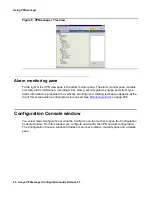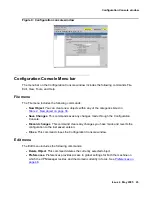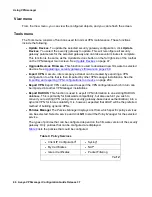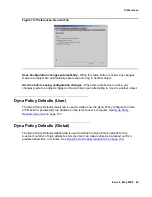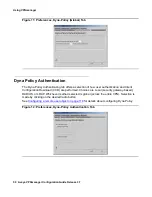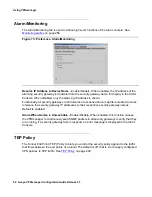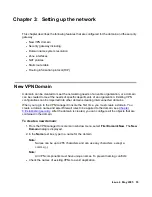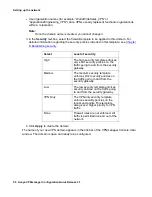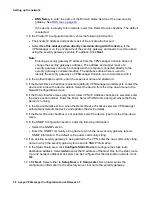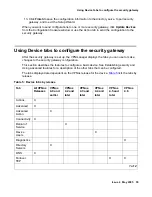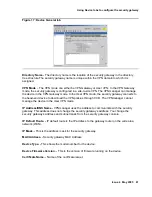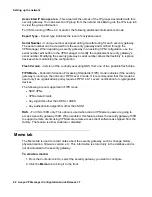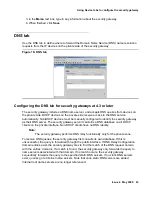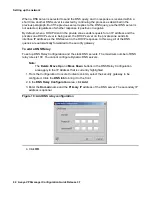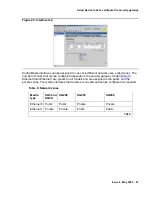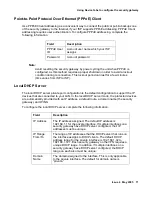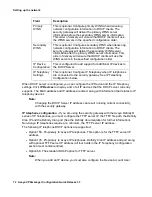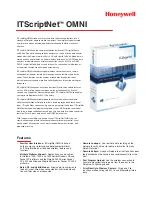
Configuring a security gateway
Issue 4 May 2005
57
Configuring a security gateway
The New Object>Device function is used to create security gateways and VPN Service Units
(VSU) in a VPN environment. The security gateway acts as the end-points of VPN tunnels.
Note:
Note:
Beginning with VPNmanager 3.4, this configuration guide uses the term “security
gateway” to refer to both the security gateway and the VSU. The VPNmanager
application uses the term “Device” to refer to both of these components.
In order to configure a security gateway, the security gateway must have an IP address and can
be reached over the network. When you select New Object for the device, a setup wizard is
launched that allows you to configure the following security gateway functions:
●
Name for the security gateway.
●
IP address that is used to identify the security gateway to the VPNmanager console.
●
SNMP community string. VPNmanager uses the SNMP protocol to monitor the security
gateways. See
Using SNMP to monitor the device on page 245
.
●
Whether the security gateway dynamically builds a routing table using RIP updates. See
Routing on page 81
.
●
Static routes, if more than one router exists on a network to which the security gateway
forwards traffic.
Creating a new security gateway
Before you create and configure the security gateway, make sure that you understand how the
features work. Review the information in this chapter and in
Chapter 8: Establishing security
.
To create a new security gateway:
1. From the VPNmanager Console main window menu, select New Object>Device. The
Device Setup Wizard dialog is displayed.
2. In the Public IP Configuration section, enter the following information.
●
The name of the new device.
●
The IP address of the new device. Select one of the following:
●
Unknown, if the address is not known. The General tab can be used to configure this
address at a later time.
●
IP Address, to enter the primary IP address of the new security gateway. Optional,
add a secondary address if VPNmanager is located on the public network. If
VPNmanager is located on the private network the secondary address is required.
Summary of Contents for 3.7
Page 1: ...VPNmanager Configuration Guide Release 3 7 670 100 600 Issue 4 May 2005...
Page 4: ......
Page 20: ...Preface 20 Avaya VPNmanager Configuration Guide Release 3 7...
Page 32: ...Overview of implementation 32 Avaya VPNmanager Configuration Guide Release 3 7...
Page 53: ...Preferences Issue 4 May 2005 53 Figure 16 Tunnel End Point Policy...
Page 54: ...Using VPNmanager 54 Avaya VPNmanager Configuration Guide Release 3 7...
Page 244: ...Using advanced features 244 Avaya VPNmanager Configuration Guide Release 3 7...
Page 292: ...Upgrading firmware and licenses 292 Avaya VPNmanager Configuration Guide Release 3 7...


